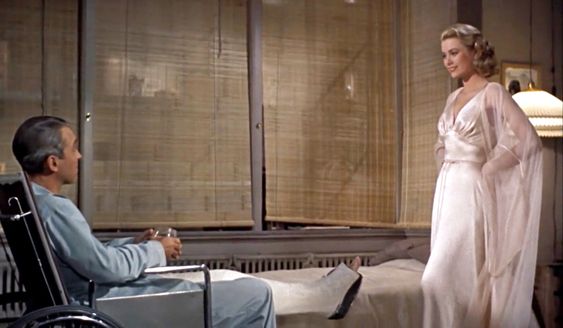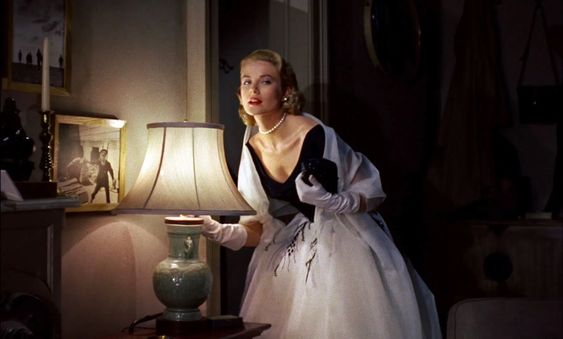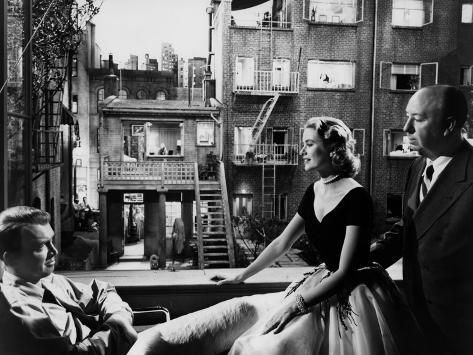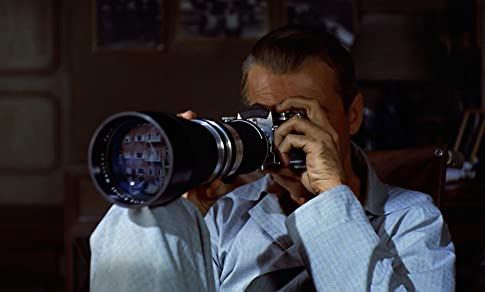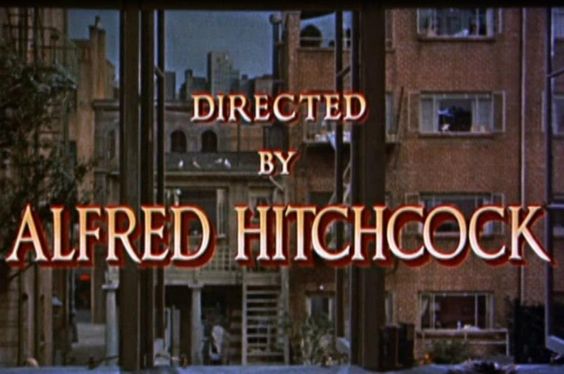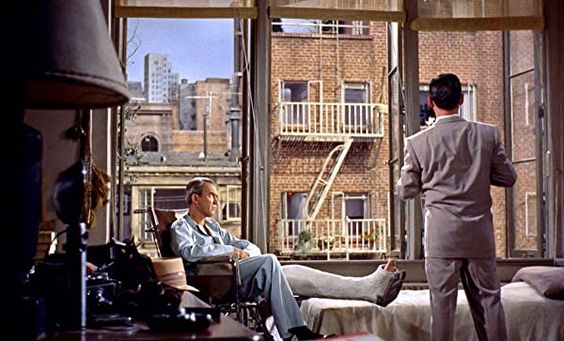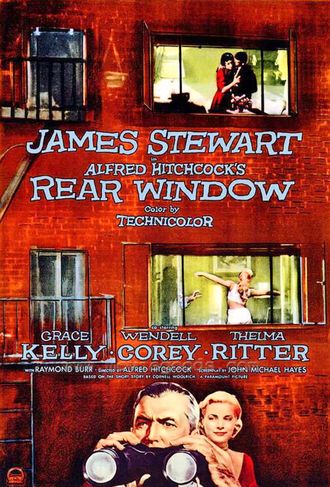|
Rear Window (1954)
Director: Alfred Hitchcock Starring: Jimmy Stewart, Grace Kelly, Thelma Ritter, Raymond Burr Studio: Paramount IMDB Rating: 10 |
Today I’ll be discussing Rear Window, Alfred Hitchcock’s 1954 classic starring James Stewart & Grace Kelly. Sometimes called the perfect reflection of Hitchcock’s filmmaking career, Rear Window utilizes one man’s subjective point of view to watch his neighbors, much as a filmmaker uses his camera to voyeuristically intrude into the lives of his characters. Based on a short story from 1942 called “It Had to be Murder”, written by prolific suspense writer Cornell Woolrich, Rear Window was the first film Hitchcock made as a part of 9 picture deal with Paramount that would represent the high point of his storied career. In a 6 year span beginning with Rear Window’s release, Hitch would go on to make To Catch a Thief, The Trouble with Harry, The Man Who Knew Too Much, Vertigo, North By Northwest & Psycho, all classics in their own right.
The original story didn’t include a love interest, but Hitch was intent on working with Grace Kelly again, after a successful working relationship was born the prior year while making Dial M for Murder. Kelly turned down a starring role in On the Waterfront to work with Hitchcock for the second of 3 films she starred in for the master of suspense. Kelly epitomizes the quintessential “icy blonde with the fire inside” that Hitchcock favored in his leading ladies & Lisa Freemont would be the pinnacle of Kelly’s glamorous & idealized characterizations for Hitch. Kelly herself would leave acting 2 years later to become the Princess of Monaco, after having made a scant 11 feature films.
The original story didn’t include a love interest, but Hitch was intent on working with Grace Kelly again, after a successful working relationship was born the prior year while making Dial M for Murder. Kelly turned down a starring role in On the Waterfront to work with Hitchcock for the second of 3 films she starred in for the master of suspense. Kelly epitomizes the quintessential “icy blonde with the fire inside” that Hitchcock favored in his leading ladies & Lisa Freemont would be the pinnacle of Kelly’s glamorous & idealized characterizations for Hitch. Kelly herself would leave acting 2 years later to become the Princess of Monaco, after having made a scant 11 feature films.
Jimmy Stewart would make a total of 4 films with Hitchcock, including 1958’s Vertigo, which has been lauded as the greatest film ever made by an international group of critics & film scholars. While Hitch often remarked that Cary Grant was his reflection on film, Stewart’s characters more accurately portrayed Hitchcock’s mental & emotional viewpoints, no more so than in the stationary & ultimately impotent L.B. Jeffries of Rear Window & as the psychologically damaged Scottie Ferguson in Vertigo.
The supporting cast members are a veritable who’s who of character actors & interesting minor players. Foremost among them is masseuse/house nurse Stella, played beautifully by 6-time Academy Award nominee Thelma Ritter. Her part was added in the screenplay as a way of giving voice to Jeff’s inner thoughts about relationships, while also providing Hitchcock’s always present humorous interludes. For Thorwald, the villain, Hitchcock chose studio heavy Raymond Burr in no small part because he looked enough like Gone with the Wind & Rebecca producer David O. Selznick, with whom Hitchcock had a tempestuous 7 year working relationship & who he didn’t mind tweaking whenever possible.
The supporting cast members are a veritable who’s who of character actors & interesting minor players. Foremost among them is masseuse/house nurse Stella, played beautifully by 6-time Academy Award nominee Thelma Ritter. Her part was added in the screenplay as a way of giving voice to Jeff’s inner thoughts about relationships, while also providing Hitchcock’s always present humorous interludes. For Thorwald, the villain, Hitchcock chose studio heavy Raymond Burr in no small part because he looked enough like Gone with the Wind & Rebecca producer David O. Selznick, with whom Hitchcock had a tempestuous 7 year working relationship & who he didn’t mind tweaking whenever possible.
As was typical of Hitchcock, before shooting began, he & screenwriter John Michael Hayes, who would write 4 Hitchcock features in 3 years, fleshed out how each scene would play & how it would be shot. For Hitchcock, the joy in filmmaking was often spent in the pre-production period, where he would take the film he saw in his head & put it to paper in written & storyboard form. To craft the story of Rear Window, Hitch determined he would need only 1 set, but that it would have to be the biggest ever constructed on a Hollywood soundstage up to that point. Consisting of 31 total apartments, some with actual running water, the set would measure 100 feet wide by 185 feet long & 40 feet high. Jeff’s apartment is actually on ground level of the soundstage & the courtyard below was hollowed out by smashing through the floor to the basement. The set was so massive that each actor in the adjacent apartments wore an ear piece to receive direction from Hitchcock. Finally, the set was lit for 4 specific times of day to save time & money, morning, daytime, twilight & nighttime. Even with shortcuts for Hollywood magic, the set cost more than $80,000 to design & construct.
While Hitchcock famously referred to actors as mere cattle & has been labeled a misogynist by film critics for decades, I would have the viewer pay particular attention to his treatment of Grace Kelly’s Lisa throughout Rear Window. Don’t get me wrong, I’m not absolving Hitchcock, just offering something to think about. First, yes, she is photographed as an object of desire, as both male & female actors of the era were, but in the context of a film about voyeurism that seems natural, even as Jeff would rather look at her than have physical contact. Lisa is the action character, who is willing to risk her life for love. She is strong, independent & a sexual being, not afraid of intimacy or commitment. In fact, Lisa Freemont may be the strongest female character in Hitchcock’s filmography. That may not erase the leering voyeurism of miss torso or the insatiable honeymooner, but that had better be left to our longer discussion.

